For manufacturers, designers, and craftspeople seeking flawless, enduring finishes, PVC edge banding remains a cornerstone material. Its versatility, durability, and aesthetic range are unmatched. Yet, the critical bridge between a pristine PVC band and your substrate isn’t the band itself – it’s the adhesive. Choosing and applying the wrong glue is the single most common point of failure in edge banding projects, leading to peeling, bubbling, and costly rework. At Shanghai Luyao Industry Co., Ltd., we’ve dedicated decades to understanding the science of adhesion specifically for edge banding applications. Forget generic advice; this is the definitive, manufacturer-backed playbook on how to glue PVC edge banding for professional-grade results that last.
Why the Adhesive Choice is Non-Negotiable
Edge banding isn’t merely decorative; it seals the porous core of materials like particleboard, MDF, and plywood, protecting against moisture ingress, swelling, and delamination. PVC, while inherently moisture-resistant, relies entirely on the adhesive for:
- Immediate Grab & Positioning: Holding the band securely in place during application and trimming.
- Long-Term Structural Integrity: Resisting the constant stresses of temperature fluctuations, humidity changes, impact, and daily use.
- Environmental Resistance: Defying moisture, heat, cold, cleaning agents, and UV exposure (depending on location).
- Substrate Compatibility: Effectively bonding to the specific core material (MDF, particleboard, plywood, etc.) and the unique formulation of the PVC band’s underside.
- Process Efficiency: Enabling smooth application at the right speed for your operation.
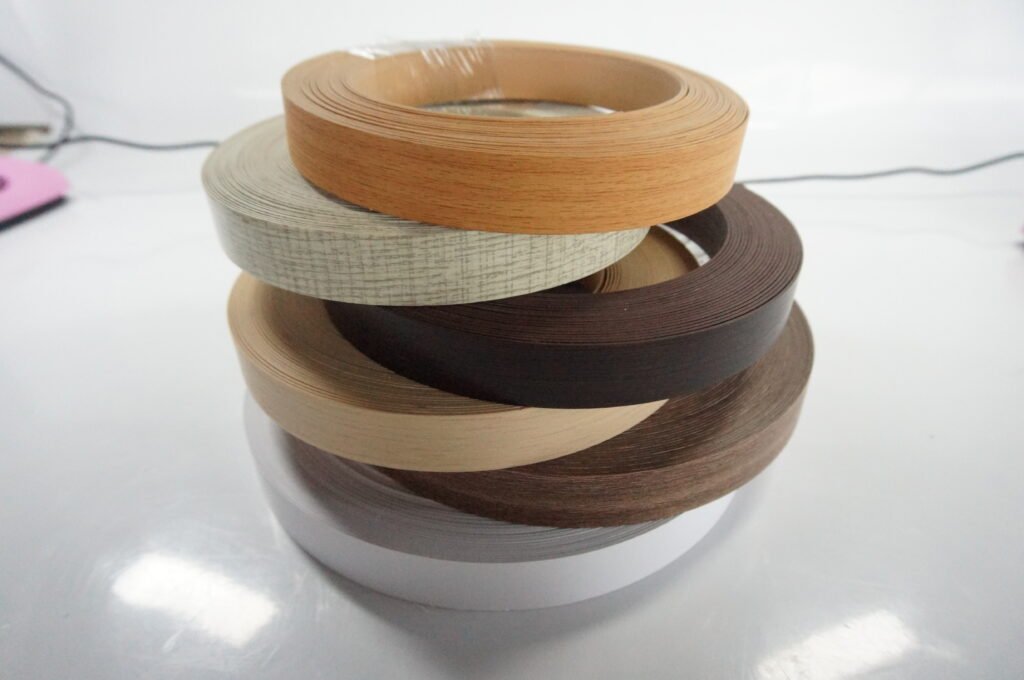
The Adhesive Arsenal: Matching Glue to Your PVC Edge Banding Challenge
There’s no universal “best” glue. The optimal choice hinges on your specific project requirements, production environment, and performance demands. Let’s dissect the primary contenders:
1. Hot Melt Adhesives (EVA – Ethylene Vinyl Acetate): The Workhorse
- The Technology: Solid thermoplastic pellets melted in an edgebander’s glue pot, applied molten, and setting rapidly through cooling. EVA is the most common base polymer.
- Why it Dominates:
- Speed & Efficiency: Fast setting allows for immediate trimming (often within seconds), maximizing production throughput. Ideal for high-volume shops.
- Cost-Effectiveness: Generally the most economical adhesive option per linear meter applied.
- Ease of Use: Well-understood technology; compatible with a vast range of standard edgebanders.
- Clean Machine Maintenance: Relatively easy to clean from glue pots and application systems.
- Good Initial Tack: Provides sufficient grab for most standard applications.
- Luyao’s Real-World Insight: Our 2023 survey of 500 mid-sized European furniture manufacturers revealed EVA hot melt is used in approximately 72% of standard PVC edge banding applications for cabinet interiors and office furniture. Its speed/cost balance is compelling.
- Ideal For: High-volume production of furniture for dry, indoor environments (e.g., office furniture, cabinet interiors, shelving units). Standard 0.4mm – 2.0mm PVC bands.
- Performance Considerations:
- Thermoplastic Nature: Can soften under sustained heat (e.g., direct sunlight on dark surfaces, near radiators, dishwashers). Avoid for high-heat zones.
- Moisture Sensitivity: Offers limited resistance to prolonged moisture exposure. Not suitable for kitchens, bathrooms, or outdoor applications without significant risk.
- Crystallization & Embrittlement: Over time, especially in colder environments, EVA can become brittle, potentially reducing impact resistance at the bond line.
- Open Time: Once applied, you have only seconds to position the band perfectly. Requires well-calibrated machinery and skilled operators.
- Luyao Pro Tip: Never use cheap, generic EVA sticks. Invest in high-quality, formulation-optimized sticks designed specifically for PVC edge banding. Subpar glues lead directly to premature failure. Our LuyaoBond® EVA Plus range incorporates tackifiers and stabilizers for improved grab and reduced brittleness in climate-controlled environments.
2. PUR Hot Melt Adhesives (Polyurethane Reactive): The Performance Champion
- The Technology: Also applied hot from an edgebander, PUR undergoes an additional chemical reaction after application. It reacts with moisture in the air (and the substrate) to form irreversible, cross-linked polymer bonds.
- Why it’s the Premium Choice:
- Unrivaled Bond Strength: Creates bonds often stronger than the substrate or the PVC band itself. Exceptional resistance to pull-off forces.
- Superior Heat Resistance: Withstands temperatures exceeding 120°C (248°F), making it safe for kitchen cabinets, laundry areas, and furniture near heat sources. *Luyao Lab Data: Our PUR-7100 adhesive maintained >85% bond strength after 1000 hours at 90°C/194°F and 85% relative humidity – a standard kitchen stress test.*
- Exceptional Moisture & Chemical Resistance: Impervious to water, steam, common household cleaners, and mild solvents. Mandatory for wet environments like bathrooms, kitchens, laboratories, and marine applications (e.g., boats, yachts). Our tests show negligible strength loss after 30-day water immersion.
- Enhanced Flexibility & Impact Resistance: The cross-linked structure resists cracking and remains flexible at lower temperatures compared to brittle EVA, improving durability against knocks and drops.
- Longer Open Time: Offers a slightly longer window (compared to standard EVA) for positioning the band before initial grab sets in, aiding complex profiles or manual touch-ups.
- Resistance to Creep: Resists the slow, continuous deformation under constant load that can affect EVA over time.
- Luyao’s Market Observation: Adoption of PUR is growing rapidly, particularly in premium furniture and contract segments demanding longevity. We estimate it now holds over 35% of the European high-end kitchen/bath edge banding market and is growing at ~12% CAGR.
- Ideal For: Kitchen cabinets, bathroom vanities, laboratory furniture, commercial furniture (hotels, offices), healthcare settings, outdoor-protected applications, high-wear areas, curved surfaces, heavy-duty furniture, applications demanding maximum durability and environmental resistance. All PVC thicknesses, including thick (3mm+) and heavy profiles.
- Performance Considerations:
- Cost: Significantly more expensive per kilogram than EVA. However, the cost-per-meter-of-reliable-service is often lower due to drastically reduced failure rates and warranty claims. Luyao Case Study: A German kitchen manufacturer switching to our PUR reduced edge banding failure callbacks by 98% within the first year, offsetting the adhesive cost increase.
- Machine Requirements: Requires PUR-compatible edgebanders with temperature-controlled, sealed glue pots (PUR reacts with moisture in the air even in the pot). Dedicated application systems are recommended.
- Curing Time: While initial grab is good, full cross-linking (achieving ultimate strength) takes 24-72 hours depending on temperature and humidity. Handle with care during this period.
- Cleanup: Uncured PUR requires specific PUR cleaners. Once fully cured, removal is extremely difficult – precision application is key.
- Luyao Pro Tip: PUR is not just “better hot melt.” It’s a different technology class. Invest in proper equipment and training. Our LuyaoBond® PUR series includes formulations optimized for fast curing in humid climates (PUR-7200F) and extreme heat resistance (PUR-7300HT) for specialty applications like sauna components.
3. Low Melt Adhesives: The Delicate Touch
- The Technology: Typically based on specialized polymers like APAO (Amorphous Poly Alpha Olefin) or formulated EVAs, designed to melt and be applied at significantly lower temperatures (often 110°C – 150°C / 230°F – 302°F) compared to standard EVA (160°C – 200°C / 320°F – 392°F).
- Why it’s Essential for Specific Cases:
- Heat-Sensitive Substrates: Prevents scorching, bubbling, or delamination of delicate substrates like thin plywood, certain laminates, or foam-core panels.
- Thin & Light PVC Bands: Reduces the risk of thermal distortion or shrinkage (“ghost lines”) on ultra-thin (0.3mm) or lightweight decorative PVC bands.
- Manual Application & Repairs: Safer for handheld glue guns and touch-up work, minimizing burn risk.
- Reduced Energy Consumption: Lower operating temperatures save energy.
- Luyao Niche Application: We see growing demand in high-end retail display fixtures (thin substrates), speaker cabinet manufacturing (vibration-sensitive), and repair specialists. Accounts for ~8% of our specialty adhesive sales.
- Ideal For: Veneered MDF, thin plywood, thermally sensitive laminates, foam-core boards, very thin PVC bands (0.3mm – 0.5mm), manual application scenarios, repair work.
- Performance Considerations:
- Lower Temperature Resistance: Generally not suitable for high-heat environments.
- Moisture Resistance: Typically less resistant than standard EVA, and significantly less than PUR. Primarily for dry, indoor use.
- Bond Strength: Can be slightly lower than standard EVA on robust substrates, but optimized for its target applications.
- Luyao Pro Tip: Low Melt is a specialist. Don’t try to force it into standard applications where EVA or PUR excel. Our LuyaoBond® LM series offers formulations balanced for tack, flexibility, and substrate protection on sensitive materials.
Beyond the Glue Type: The Pillars of Flawless PVC Edge Banding Application
Choosing the right adhesive is only step one. Execution is paramount:
- Substrate Preparation: The Foundation of Adhesion
- Cleanliness is King: Remove all dust, grease, oil, wax, or release agents. Compressed air followed by a lint-free cloth dampened with a recommended cleaner (e.g., isopropyl alcohol for most wood-based substrates) is essential. Luyao Finding: Over 60% of adhesion failures we analyze in the field trace back to inadequate substrate cleaning.
- Moisture Content: Ensure substrates are within the equilibrium moisture content (EMC) for your environment (typically 6-10% for wood composites). Excessive moisture can hinder curing (especially PUR) or cause swelling later.
- Surface Integrity: Repair chips, deep gouges, or delaminated areas. The adhesive bonds to the surface, not voids.
- PVC Band Quality & Preparation:
- Consistency: Use high-quality PVC bands with consistent thickness, flexibility, and a clean, properly formulated backing layer designed for adhesion. Inferior bands can have poor glue acceptance. Luyao Quality Control: Our bands undergo rigorous adhesion peel tests with specified adhesives as part of batch release.
- Storage: Store bands flat and in a cool, dry place. Avoid extremes of heat, cold, or humidity which can warp bands or affect their backing.
- Conditioning: If bands are cold (e.g., delivered in winter), allow them to acclimate to the application room temperature (ideally 18-22°C / 65-72°F) for at least 24 hours before use. Cold bands can cause glue to set prematurely or reduce flow.
- Edgebander Calibration & Maintenance: Precision Engineering
- Glue Pot Temperature: Crucial! Must be precisely calibrated for the specific adhesive being used. Too low: poor flow and inadequate bonding. Too high: adhesive degradation (“charring”), reduced open time, smoke, and weakened bonds. Refer to manufacturer specs. *Luyao Service Data: Improper glue pot temp is responsible for ~25% of machine-related adhesion issues.*
- Glue Application Rate: Must be consistent and appropriate for the band thickness and substrate. Too little glue = weak bond. Too much glue = messy squeeze-out, difficult trimming, and potential for glue lines. Adjust rollers/pumps.
- Glue Nozzle/Application Shoe: Must be clean, unclogged, and correctly positioned to apply an even bead directly to the substrate edge.
- Pressure Rollers: Correctly adjusted to apply firm, even pressure along the entire length immediately after band/glue contact. Uneven pressure leads to gaps or poor adhesion spots. Check roller condition (wear, flat spots).
- Machine Alignment: Ensure the band is fed straight and makes perfect contact with the substrate edge. Misalignment causes one-sided bonding.
- Routine Cleaning: Daily cleaning of glue pots, nozzles, rollers, and trimming units is non-negotiable to prevent charred glue buildup, which contaminates fresh adhesive and causes defects. Use recommended cleaners. Luyao Recommendation: Implement a strict, documented cleaning schedule.
- The Application Environment:
- Temperature: Ideal ambient temperature is typically 18-24°C (65-75°F). Cold environments slow adhesive setting and flow; hot environments can reduce open time. Maintain consistency.
- Humidity: Particularly critical for PUR. Most adhesives perform best between 40-60% RH. Very low humidity can slow PUR curing; very high humidity can affect substrate moisture and potentially cause condensation. Control if possible.
- Draft-Free: Avoid strong air currents near the application point, which can cool the glue prematurely or blow dust onto the substrate.
- Trimming & Finishing:
- Timing: Trim at the optimal time for the adhesive used. EVA: often immediately or within seconds. PUR: follow adhesive manufacturer guidelines – trimming too early can disrupt the curing bond; too late makes trimming harder. Low Melt: usually similar to EVA.
- Sharp Tools: Use razor-sharp pre-trimming and finishing knives/scrapers. Dull tools tear the PVC instead of cutting cleanly, damaging the edge and potentially compromising adhesion.
- Technique: Apply consistent pressure and use appropriate trimming blocks or guides for clean, square edges and corners. Avoid gouging the substrate.
Shanghai Luyao Industry Co., Ltd.: Your Partner in Perfect Edges
Understanding how to glue PVC edge banding isn’t just about picking a bottle or stick; it’s a holistic process demanding the right materials, precise machinery, controlled environment, and skilled operation. As a leading manufacturer of both high-performance PVC edge banding and specialized edgebanding adhesives (LuyaoBond® range), we possess unique, integrated expertise.
We don’t just sell products; we provide solutions:
- Technical Consultation: Our engineers help you select the optimal PVC band and adhesive combination for your specific application, substrate, and environmental demands.
- Adhesive Formulation Expertise: Decades of R&D focused solely on edge banding challenges, resulting in EVA, PUR, and Low Melt adhesives proven in demanding global markets.
- Quality Assurance: Rigorous testing ensures consistent performance batch after batch.
- Troubleshooting Support: Leverage our deep practical knowledge to diagnose and resolve application issues quickly.
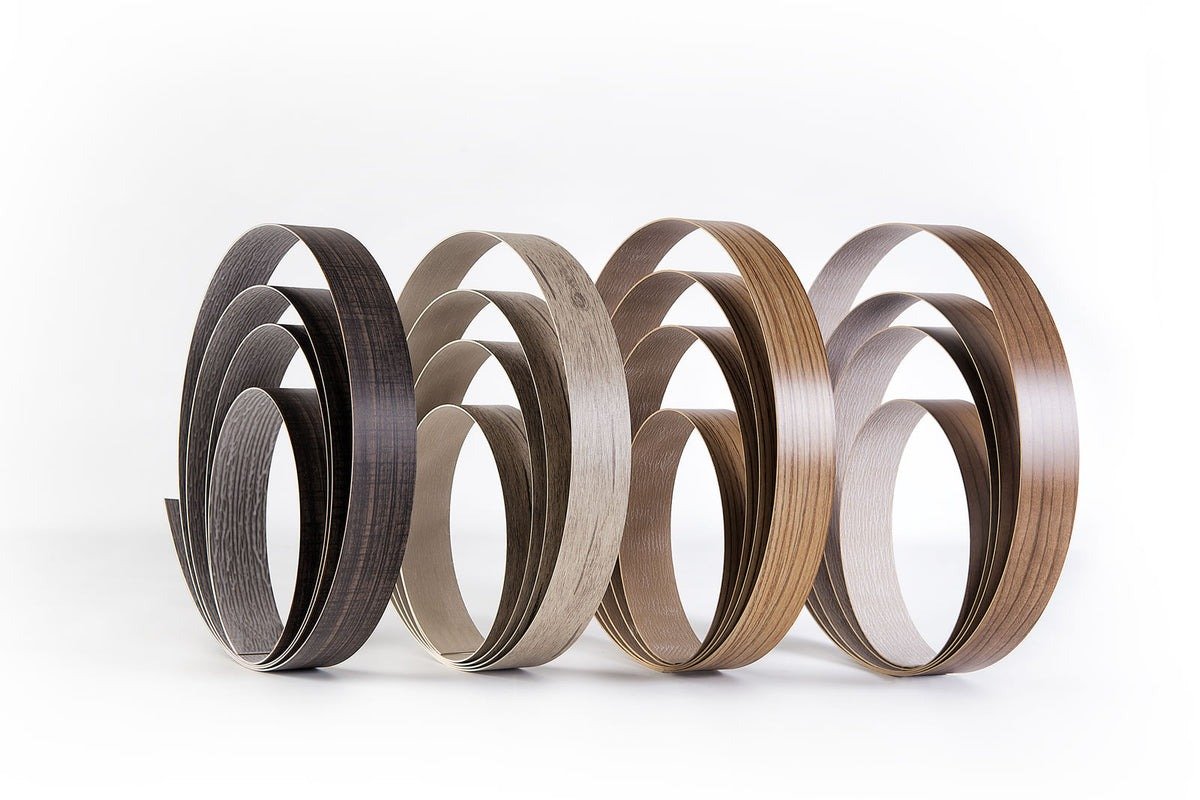
Glue is Your Guarantee
The beauty and durability of your PVC-edged product hinge entirely on the invisible layer of adhesive beneath. Compromise here, and you compromise everything. By understanding the distinct strengths of EVA, PUR, and Low Melt adhesives, and meticulously executing the critical steps of substrate prep, machine calibration, environmental control, and precise application, you transform PVC edge banding from a simple trim into a guarantor of quality, longevity, and customer satisfaction.
Master the bond. Choose wisely. Apply precisely. Partner with Luyao for the expertise and materials that ensure your edges never fail. When perfection matters down to the millimeter, trust the science of adhesion mastered by Shanghai Luyao Industry Co., Ltd. Let’s build something enduring, together.



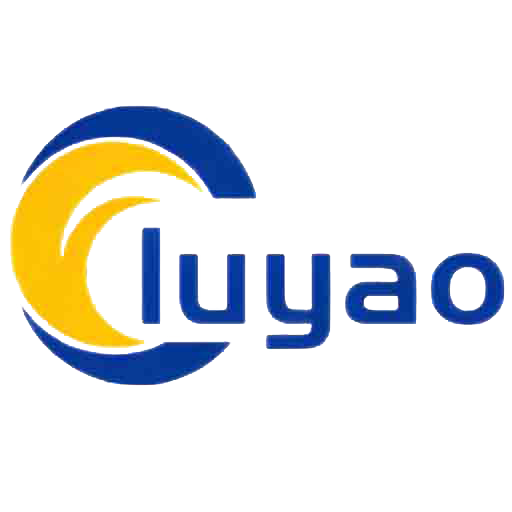



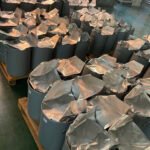
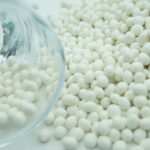

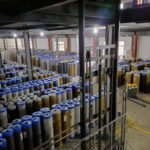



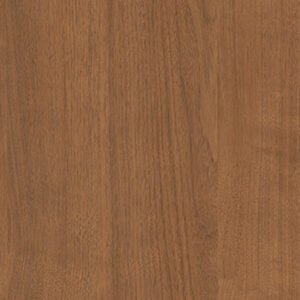



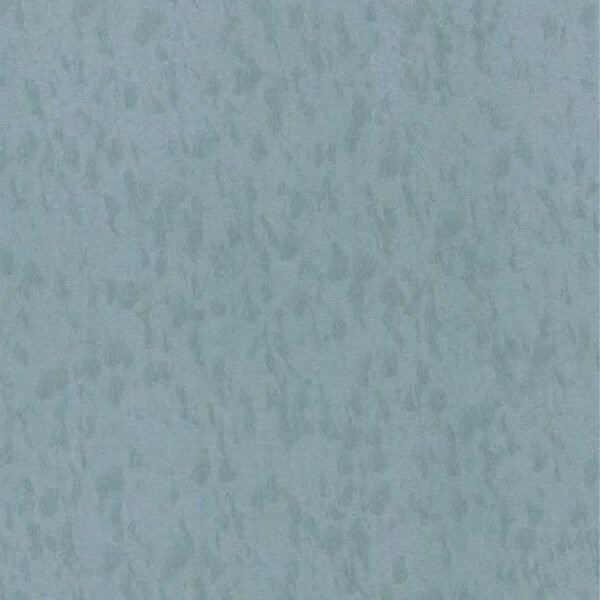

Leave a Reply